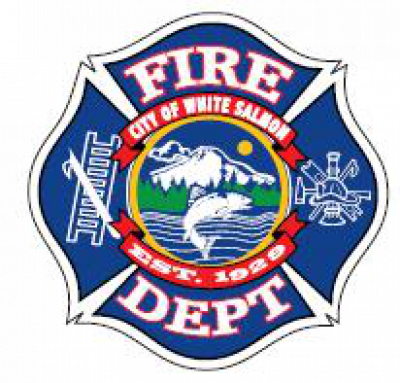White Salmon Fire Department
220 NE Church Ave, White Salmon
White Salmon, WA 98672
Phone: 1-509-493-1133
Contact Us by Email
Hours: Mon - Fri 8am - 5pm
History of White Salmon Fire Department
Founded in 1929, the White Salmon Volunteer Fire Department has grown to be a vital life- and property-saving resource for the residents of the city and surrounding area. The department has been fortunate in finding dedicated volunteers to help serve the community.
Before the establishment of the White Salmon Fire Department, fire fighting was an informal affair, performed usually by the owner of the burning property, or by good Samaritans in the vicinity. Finally, the power of benevolence was taken from the general populace and gifted to those we now know as “firemen”.
Equipment and vehicles: Before the establishment of the White Salmon Fire Department, fire fighting was an informal affair, performed usually by the owner of the burning property, or by good Samaritans in the vicinity. WSFD’s first apparatus was a hand-drawn hose cart—no water tank—and a hose on two wheels. The water (if it was available) would be accessed at or very near the site of the fire. This method was eventually replaced by the “chemical cart,” a 300 gallon tank on four wheels. When it was time to activate this tank, pressure was generated by introducing the water to a mixture of baking soda and sulfuric acid to the water. The resulting chemical reaction generated substantial pressure to propel the liquid through a hose that was thinner than a garden hose. The major drawback to this method is that the tank was always emptied with every use. The hose could not be shut off prematurely or the tank would explode.
A prominent city employee by the name of William Manly Sr. was instrumental in obtaining WSFD’s first automotive apparatus, a modified Perlis touring car. This became the original Engine #1, and was used until Manly Sr. rolled it over as he was leaving the station. Nobody was seriously injured in this mishap since all the firemen clinging to the sides of the vehicle were able to jump free. Around 1949, the department aquired a rescue truck and began to respond to medical calls as well as fires. In 1961 WSFD obtained its first modern day fire truck that became known as Engine #7. Throughout the years many engines, trucks, and vehicles have come and gone, but currently the department has two Engines, a Tender, and a brush truck.
Communications and Dispatch: The WSFD volunteers used to have alarm phones, called “red phones,” in their homes that rang in any time of day or night in an emergency. These were similar to the old-time crank phones, but with no crank, so outgoing calls were disabled. These phones were equipped with a button that triggered a radio alarm on every one of these red phones. This method was eventually modernized to one-way pagers with fire alarms strategically mounted on a few telephone poles throughout the city. Currently, the volunteers rely on their pager and radios, as well as one siren located at the fire station.
Medical: WSFD began doing medical assists around 1949. Medical assists are common with volunteer fire departments. They’re a cost-effective way to provide some extra manpower. In WSFD’s early history the ambulance also doubled as a hearse. The department has gone through periods of medical aid and rescue operations,depending on the volunteers and funds availiable at the time. Currently the department is making a return to medical assists, with three volunteers working toward becoming emergency medical technicians. All volunteers hold first aid and CPR certifications.
Mutual Aid: In the 1950’s, WSFD formed an especially close relationship with Husum (Fire district #3) by doing fire fighting contract work for them before Husum had their own fire department. In 1956, Husum bought an old engine from White Salmon, and in the spring Husum’s department was officially formed. Although now separate, the relationship between WSFD and Fire district #3 didn’t end. Currently the two departments maintain a strong bond, working together on almost every call, and training together weekly. Important mutual aid bonds exist between several local departments, including White Salmon, Fire Dist. #3, Bingen, Lyle, Hood River, Underwood, and many more.
Station: In its present location, the station began in the basement where the City’s shop is now located, and later moved to the more spacious upper floor in 1997. A few years ago the station was renovated and improved, and presently features six apparatus bays.
Volunteers and Chiefs: WSFD has had 9 Fire Chiefs in its 80 years of existence: Lyle Enos (first chief), Roland “Bud” Peeler, Ernie Sampson, Bill Manly Jr. (son of William Manly Sr.), Pete Bentley, Wayne Carlock, Dean Vermeire, Tom Smith, and Bill Hunsaker (current Chief). The volunteer base has remained steady throughout the department’s history, with about 30 members on the roster at any given time. Numbers fluctuate, and the amount of personnel that responds changes depending on many factors, but the department has always had a strong body of volunteers that are willing to donate their time to helping their community.

